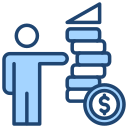Crush Debt with Data-Backed Methods
List every balance, rate, minimum payment, and due date. Sorting this once reveals your true priorities. Sam discovered two tiny balances he could eliminate immediately, freeing money for bigger wins. Post-anonymized stats if you’d like feedback—our community is kind and practical.
Crush Debt with Data-Backed Methods
Use a calculator to compare timelines and interest saved. Avalanche minimizes interest by tackling highest rates first; snowball maximizes motivation by clearing smallest balances. Choose the method you’ll actually follow. Then schedule transfers automatically. Share which method you picked and why—it helps others decide.




